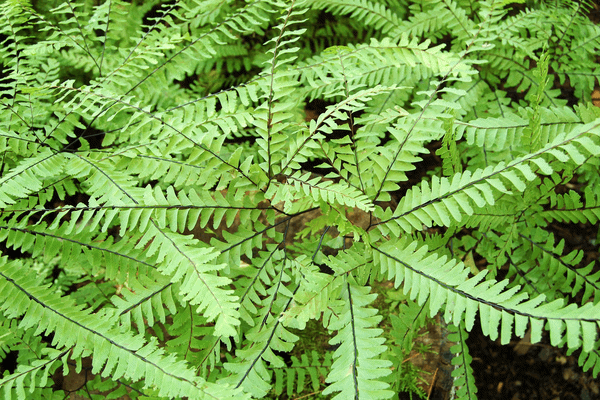
The economic importance of pteridophytes, despite being considered lower plants, is substantial and multifaceted. These plants play a crucial role in various industries and contribute significantly to human sustenance and economic activities.
Approximately 170 species of pteridophytes have been identified for their diverse applications in areas such as food, flavoring, dye production, medicine, biofertilizers, oil extraction, fiber production, and biogas generation (Manickam and Irudayraj, 1992).
Food Source
Pteridophytes serve as a valuable source of food and fodder. For instance, the sporocarps of Marsilea, a water fern, yield starch that is utilized by certain tribal communities after cooking.
In addition, the circinately coiled young leaf tips of Diplazium esculentum, Diplazium maximum, and other ferns are consumed as vegetables.
Marselia is employed as a substitute for clover in animal feed, particularly in regions like Canada where the crozires of Matteuccia struphiopteris are commonly served as spring vegetables. These ferns can also be stored and frozen for later use.
Biological Fertilizer
Azolla, a water fern, forms a symbiotic association with the nitrogen-fixing cyanobacterium Anabaena azollae. This small pteridophyte has microscopic leaves with a cavity at the base hosting the filaments of nitrogen-fixing blue-green alga Anabaena azollae.
Azolla, therefore, possesses the ability to fix atmospheric nitrogen, enhancing soil fertility. It is introduced into paddy fields as a biofertilizer, contributing to sustainable agricultural practices.
Medicinal Applications
Several pteridophytes have medicinal properties. For instance, an anthelmintic drug is derived from the rhizomes of Dryopteris (Male Shield Fern).
Fronds and rhizomes of Adiantum caudatum are used in wound healing. The leaf and root decoction of Adiantum lunulatum (syn. Adiantum philippense) has proven effective in treating chest complaints.
Leaves of Marsilea minuta and Pteris quadrifolia are utilized for addressing cough and bronchitis, while fresh leaves of Ophioglossum reticulatum find application in treating menstrual disorders. Tender leaves of Tectaria cicularia are employed in wound healing, eczema, and scabies.
Ornamental Purposes
Certain species of Lycopodium and Selaginella are cultivated for ornamental purposes in gardens and greenhouses due to their variously colored, feathery, moss-like leaves.
Ferns, including Adiantum, Marattia, Pteris, Salvinia, Osmunda regalis, and Lycopodium obscurum, are also grown for their delicate and graceful leaves, enhancing the aesthetic appeal of gardens and landscapes.
Soil Binding
Pteridophytes contribute to soil conservation by binding the soil, particularly along hill slopes. Their root systems and growth patterns help prevent erosion, protecting valuable topsoil from being washed away during rainfall and other environmental factors.

Scouring and Polishing
The stems of Equisetum have been historically used for scouring, a process involving the cleaning of utensils. Additionally, Equisetum species are known as scouring rushes due to their application in polishing metals, showcasing their versatility in everyday activities and industrial processes.
Ecological Indicators
Pteridophytes serve as ecological indicators, providing valuable information about soil composition and mineral content.
Equisetum, for example, accumulates minerals, including gold, in its stems, making it an indicator of gold presence in the soil. Similarly, Asplenium adulterinum indicates the presence of nickel, and Actinopteris australis serves as an indicator plant for cobalt.
Conclusion
In conclusion, the economic importance of pteridophytes extends across various sectors, ranging from agriculture and medicine to industry and environmental conservation. The diverse applications of these plants underscore their significance in human societies and their potential contributions to sustainable development.
As our understanding of these plants deepens, further opportunities for utilization and innovation may arise, further emphasizing the importance of conserving and exploring the economic potential of pteridophytes.




